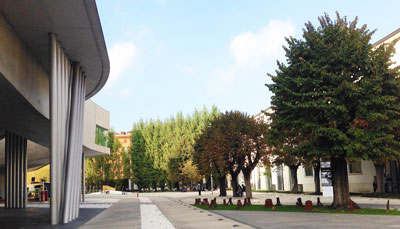High Speed changes cities
Carlo De Vito, Chairman of FS Sistemi Urbani spoke about this at MAXXI in Rome, during the Urban Spaces meeting, touching on how they change and how they are changing us

Rome, 10 July 2019
In Italy, the High Speed System has revolutionised people's lifestyle and the country's mobility. On the one hand, it has changed the concept of travel and commuting, whilst on the other, it has contributed to the regeneration of major urban centres and neighbouring urban areas. Spaces to connect, rediscover and live.
Carlo De Vito, Chairman of FS Sistemi Urbani — the FS Italiane company that exploits the Group's real estate assets no longer needed for railway activities — spoke on this matter at MAXXI in Rome during the meeting Urban Spaces: how they change and how they are changing us, the third event of the Rome-Milan project. Round trip.
The event — organised by MAXXI, the National Museum of 21st Century Art, and the Triennale di Milano with the sponsorship of Trenitalia — was an opportunity to further the role of high-speed railway as a tool for developing territories and cities, starting with 104 Frecciarossa trains connecting Rome and Milan daily.
The new high-speed stations, designed by major archistars selected through international competitions, are the central component of the new architecture being developed and yet to be developed in the urban areas in which they are found. In addition to being an opportunity for development, they are a factor for the enhancement of tertiary properties (offices and commercial activities). In Milan, for example, according to Nomisma data, the offices around the stations of Rogoredo and Porta Garibaldi have recorded an increase in average rents of 10.1% and 9.6% respectively over ten years, compared to an overall average drop of 20.5% in the Lombardy capital. In Rome, in the same period, average retail rents fell by 24.1% overall, whilst the decrease recorded in the areas around Tiburtina station was around 2%.
Torino Porta Susa, Reggio Emilia Mediopadana HS, Bologna Centrale HS, Roma Tiburtina and Napoli Afragola have also redefined the concept of the station itself. The station is no longer just a place to commence or conclude a journey but a new urban gathering space in which to meet, shop and take back one's time. The new hubs - in some cases being veritable works of art - are not only functional for people but are the driving force behind the redevelopment of the surrounding urban fabric.